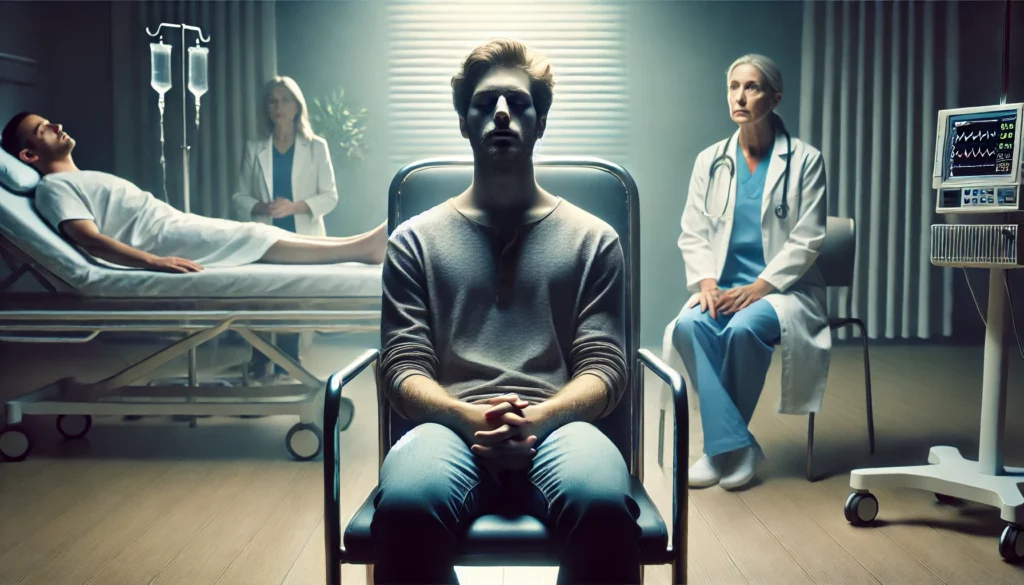
1️⃣ Introduction
Catatonia is a severe neuropsychiatric syndrome characterized by motor, behavioral, and cognitive disturbances. It frequently occurs in connection with psychiatric disorders, particularly bipolar disorder and unipolar depression. This report explores the characteristics, causes, and treatment options for catatonia in these contexts.
2️⃣ Definition and Symptoms of Catatonia
Catatonia is characterized by a range of motor and psychological symptoms, including:
- Mutism: Absence or severe reduction in speech production.
- Stupor: Rigid, immobile posture, often with a lack of response to stimuli.
- Catalepsy: Maintaining an unnatural body posture.
- Waxy Flexibility: Passive movement of limbs that maintain their position.
- Negativism: Resistance to instructions or passive refusal to speak or move.
- Echopraxia/Echolalia: Involuntary imitation of another person’s movements or speech.
- Agitation: Sudden, seemingly purposeless motor restlessness.
3️⃣ Catatonia in Bipolar Disorder
🔄 Catatonia in the Manic Phase
- Extreme motor agitation and restlessness, often with aimless behavior.
- Increased impulsivity and rapid mood shifts.
- Lack of insight into one’s own behavior.
😞 Catatonia in the Depressive Phase
- Severe motor inhibition, sometimes leading to complete immobility.
- Mutism and extreme social withdrawal.
- Rigid body posture and lack of facial expressions.
4️⃣ Catatonia in Unipolar Disorder (Major Depression)
- Often occurs in severe depressive episodes.
- Can be accompanied by psychotic symptoms.
- Patients do not respond to environmental stimuli and exhibit extreme motor rigidity.
- Can lead to life-threatening malnutrition and dehydration.
5️⃣ Causes and Mechanisms
🧠 Neurobiological Factors
- Dysfunction of the GABA and dopamine systems: An imbalance of these neurotransmitters contributes to motor rigidity or agitation.
- Structural brain changes: Studies indicate abnormalities in basal ganglia and frontal lobe function.
💡 Psychological Factors
- Severe psychological stress can trigger a catatonic reaction.
- Traumatic experiences or emotional overload.
6️⃣ Diagnosis and Differential Diagnosis
- DSM-5 criteria require the presence of at least three catatonic symptoms.
- Differentiation from neurological disorders such as Parkinson’s disease or encephalitis.
- EEG, MRI, and laboratory tests help rule out organic causes.
7️⃣ Treatment Options
💊 Pharmacological Therapy
- Benzodiazepines (e.g., Lorazepam): First-line treatment for rapidly resolving catatonic symptoms.
- Antipsychotics: Used cautiously, as they can sometimes worsen catatonia.
- NMDA receptor antagonists (e.g., Amantadine): Effective in treatment-resistant catatonia.
⚡ Electroconvulsive Therapy (ECT)
- Highly effective for catatonic states, especially when benzodiazepines are insufficient.
- Particularly useful for catatonic depression or treatment-resistant bipolar catatonia.
🏥 Supportive Measures
- Fluid and nutritional therapy to prevent deficiencies.
- Physical and movement therapy to avoid muscle atrophy and contractures.
- Psychotherapeutic support once the acute condition has subsided.
8️⃣ Conclusion
Catatonia is a severe complication of bipolar and unipolar disorders that requires immediate medical intervention. While benzodiazepines often provide rapid relief, electroconvulsive therapy (ECT) remains the most effective treatment for severe cases. Early diagnosis and intervention are crucial to preventing life-threatening consequences and significantly improving the quality of life for affected individuals.